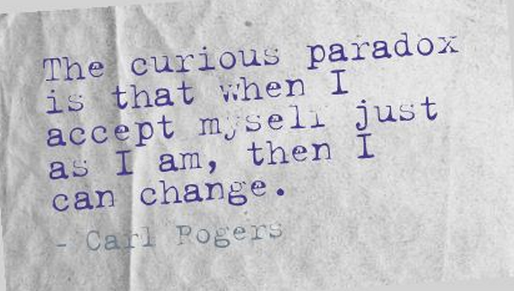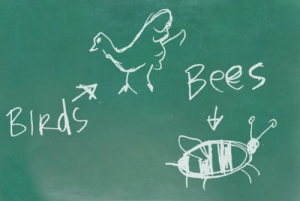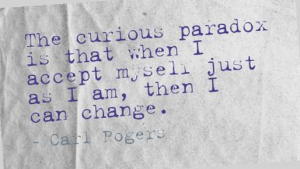*This post originally appeared on TeenBeing.com
“It is important to understand that the weight bias that obese youth face is just as serious as the physical consequences of excessive weight on the welfare of the child.”
-CDC: Childhood Obesity, Issues of Weight Bias
Sorry folks, but we’re going about this all wrong.
As teachers, we know that shaming rarely works to motivate behavior change, yet it still seems to be the focus of our fight against obesity.
Full disclosure here: I’m a health teacher, but I was not a healthy teen. I understand the damage of fat-shaming on a personal level, and it’s hard not to get angry about it… even though I now experience it from the other side. I’m constantly caught off guard when I hear people that I respect – people who only know me at my current size- making judgmental comments about other people based solely on their weight.
Fat stigma is real, and it’s making our problem much worse.
Over one-third of kids aged 11-17 are overweight or obese, but our current anti-obesity angle is alienating the kids who need us the most, while instilling a fear of food in a growing number of the rest of them.
Obesity and eating disorders share the same roots, and if we want to support all of our kids as they work toward maintaining a healthy weight, then we need to change our approach.
Here are five ways we can do that in our schools…
- Combat body teasing, keep labeling out of the classroom, and check your bias at the door.
In a recent study from UCLA, researchers looked at the impact of labeling on the weight of adolescent girls. Turns out, being told that they were “too fat” at the age of 10 left them more than 1.6 times more likely to become obese by the age of 19. All of the other factors – socio-economic, genetic, age at the onset of puberty- were taken into consideration, and this still came out as the biggest predictor.
This is a landmark study, as it’s the first of its kind to prove what experts have been predicting for quite some time… our societal fear of fat is only making us fatter.
If we want to combat body teasing, then we need to increase levels of empathy… not just in our students, but in our teachers and coaches as well.
For a curriculum that teaches all kids to take care of themselves and support each other during adolescence, check out Healthy Bodies by Kathy Kater.
- Teach kids about stress management and coping skills
Being told that they are fundamentally flawed, especially for something theycan’t immediately change, can be an emotionally jarring experience for a child. Add in the stress of stigmatization, not just from peers, but family members, coaches, the media, government, and countless other well-intentioned, but ill-informed adults, and you have the perfect ground for unhealthy coping skills to take root and develop into bad habits for life.
If we want to get in front of that, we need to teach kids to recognize their unhealthy coping skills while equipping them with newer healthy ones, like exercise, meditation, journaling, access to online forums, and peer and family support.
- Instill a life-long passion for movement and physical activity
Our priorities for exercising are out of whack. The media tells us to engage in physical activity for how it makes us look, rather than how it makes us feel. And some youth sports are so competitive that we’re pushing kids to feel like exercise is something to be endured rather than enjoyed.
Funding and large class sizes make it difficult for PE teachers to differentiate, but a simple way to support all students regardless of athletic ability is by switching from a timed mile to a 12 minute run.
Set the stopwatch to 12 minutes. Everyone starts and stops at the same time, and tries to beat their personal best. Being the last one running in – while everyone is standing there staring – can be a humiliating and stressful experience for a child. It’s one of the reasons that overweight kids are more likely to fake illnesses and injuries to get out of PE, when it could be one of the most enjoyable parts of their day.
- Put the focus of nutrition lessons on eating real food, rather than on calories and fear
If we want to encourage a love of healthy eating, then we’ve got to teach the kids about real food. A focus on labels and numbers instills fear in kids and can lead to disordered eating. Try a simple approach, and focus on foods that don’t have labels. Teach them about Michael Pollan’s Food Rules, and get the kids advocating for healthy choices in their cafeteria.
Here are some resources for a cafeteria makeover project that makes nutrition come alive for students in a sustainable and enjoyable way.
- Decision making and instant vs. delayed gratification
I asked my students to answer the following question in their journals the other day:
Often times, kids (and adults!) know the healthy food choices to make, but they still don’t do it. Why do you think that is?
Most of their answers came back to instant gratification. Adolescents want what feels good in the moment, and developmentally, it’s difficult for them to think long term. Self-control can be taught though, and decision-making should be a big part of any health class.
Because really, that’s what it all comes down to. Our health is mainly the result of the countless decisions that we make every day… let’s equip our students with the skills needed to make the right ones.
To help facilitate a classroom discussion on weight bias, there’s an article in this month’s issue of Choices- Eric is Getting Healthy. It’s about a student who is trying to change his life and the teacher who is helping him do it. We can all learn something from their example.
And for more information about the effect of weight stigmatization on our kids, check out this resource page from the AED.





